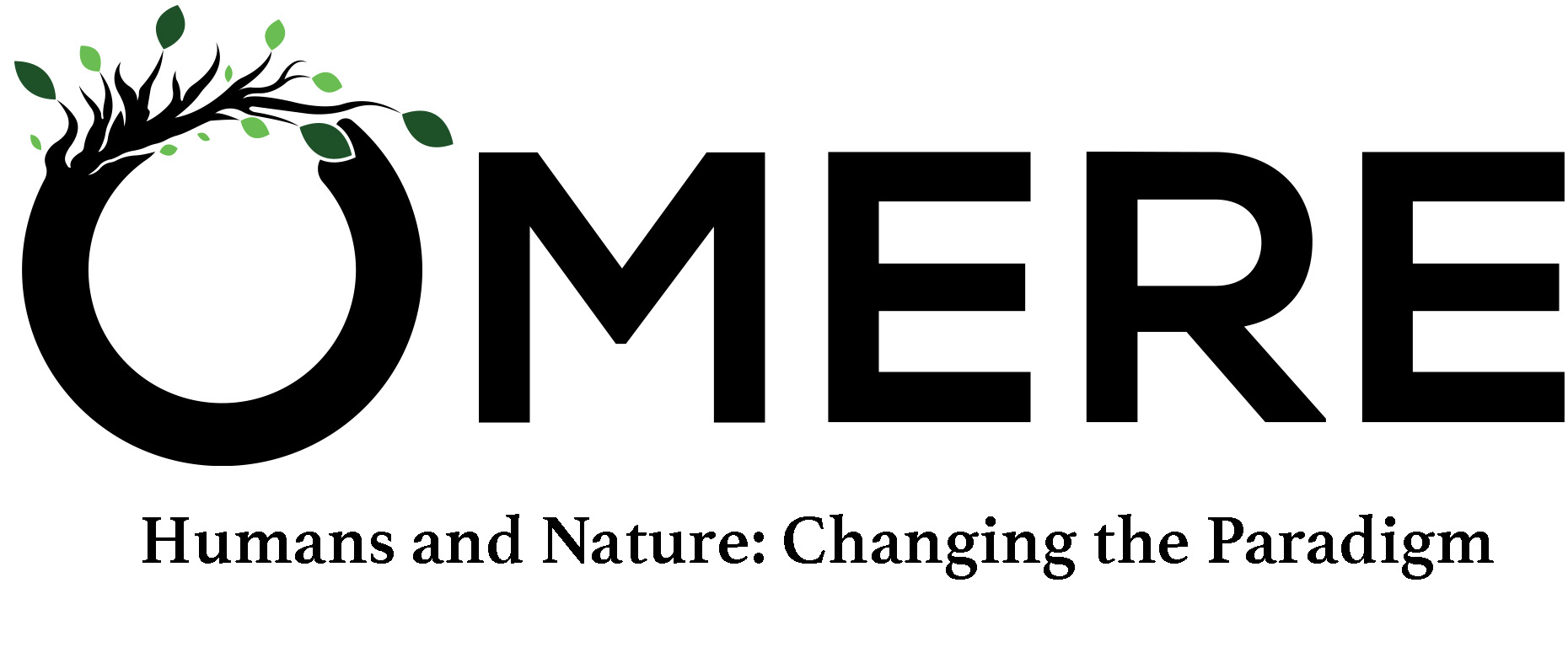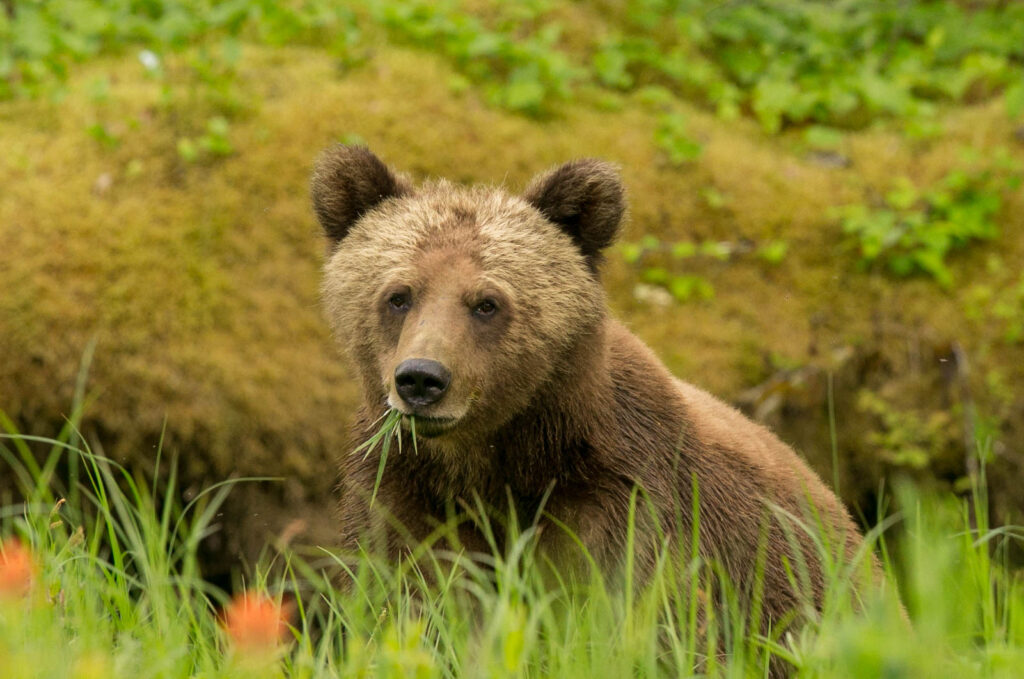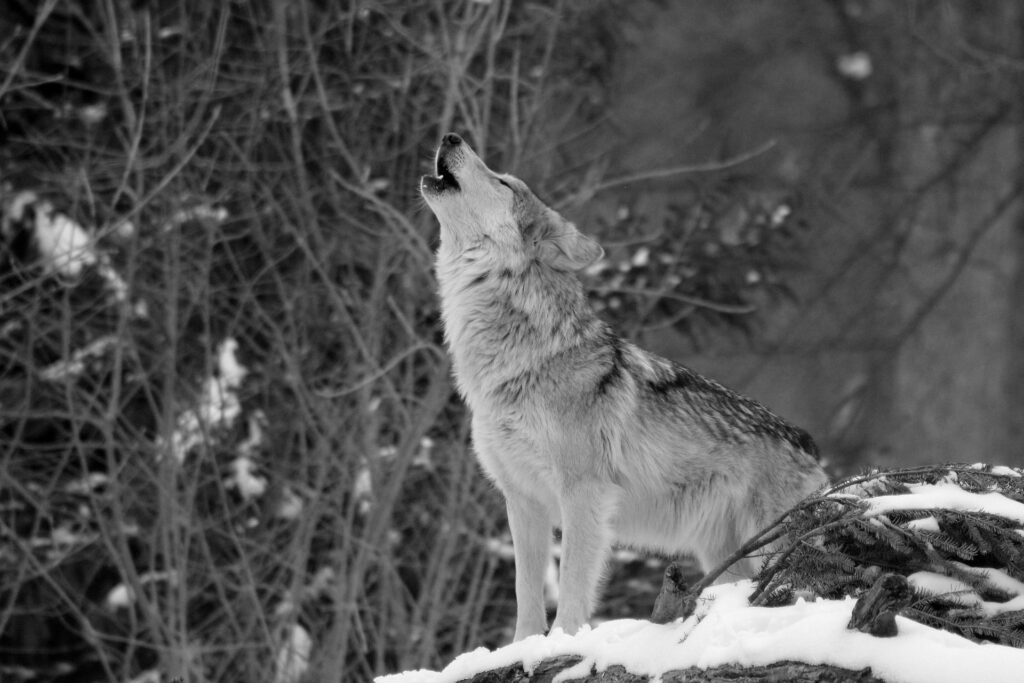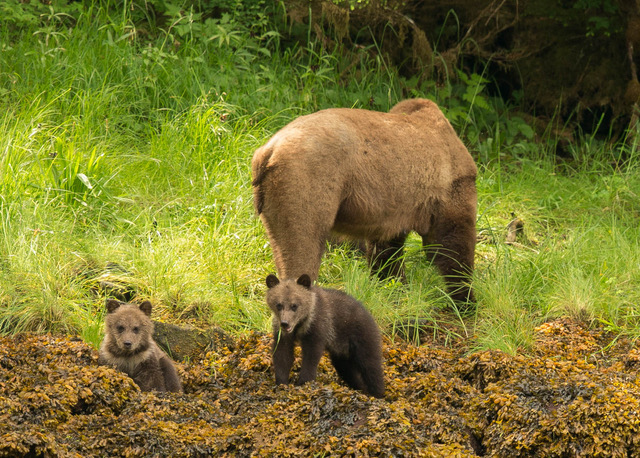Photo Credit: Trish Boyum Nature Photography
“By valuing individuals, we can learn more about them. We’re asking questions at a different unit of focus, which allows for a whole new body of knowledge to be discovered…It’s going to make us do better science and make science better.” ~ Kristy Ferraro
Wildlife, the word itself, implies a collective. Indeed, as some would argue, wild animals are worth saving only as a collective. Consequently, as long as a population thrives or even persists, individual sentient beings don’t matter.
It is one of the conservation dogmas that the sole preoccupation of wildlife scientists should be ensuring that the population size is sufficient to maintain genetic diversity and avoid inbreeding. This size might differ, but all that counts is the long-term viability of a species and the health of ecosystems.
Aldo Leopold, widely regarded as the founder of the field of wildlife management, wrote in A Sand County Almanac in 1949, “A thing is right when it tends to preserve the integrity, stability, and beauty of the biotic community. It is wrong when it tends otherwise.” The significance of preserving biotic communities was further argued by Michael Soulé’s influential paper in 1985, which established the priorities of conservation biology. Individuals had no place in it, since, as Soulé stated, “conservation is engaged in the protection of the integrity and continuity of natural processes, not the welfare of individuals.” Conservation biology became thus a mission-oriented science with the ethical imperative to protect biodiversity or, in other words, the variety of all living things, ranging from genes and species to ecosystems.
Disregarding the individual is not only antithetical to appreciating sentience but also detrimental to enhancing conservation efforts. An ethical failure goes hand in hand with an ecological one.
Such a conservation philosophy still underpins the prevailing conservation model. And yet, it fails on two grounds. Disregarding the individual is not only antithetical to appreciating sentience but also detrimental to enhancing conservation efforts. An ethical failure goes hand in hand with an ecological one.
Firstly, wild animals such as bears are not just “living things” but sentient beings that form complex social relationships. As Ben Kilham, an expert in bear behaviour, writes, “they are intelligent creatures with cognitive skills well beyond those science currently recognizes.” They have families; they operate with a moral code; they experience grief, and they have a well-developed system of justice, punishment, and friendship. Just like every one of us carries within a unique and irreplaceable self, so does each bear represent a life story that is meaningful to him.
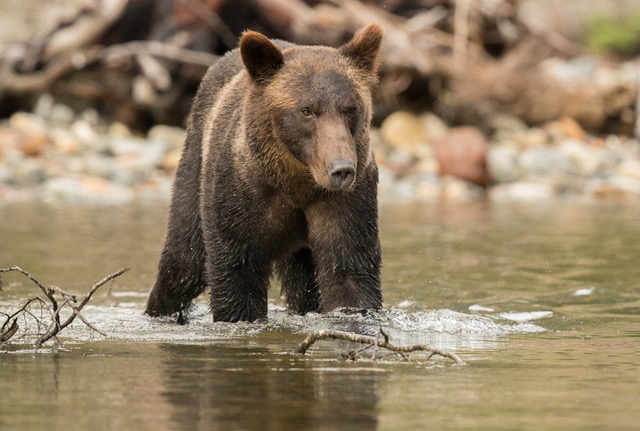
Photo Credit: Trish Boyum Nature Photography
We all know it. We are drawn to view animals in anthropomorphic terms because the same basic emotions and needs rule us all: joy, anguish, sorrow, suffering, love. This is who we are; this is who they are. For example, Leonardo Bereczky’s research, drawn from a decade of bear observations, shows that there is “somebody” in every bear. Some bears are absent-minded, lazy, or shy, while others display assertiveness and a propensity for risk-taking. Moreover, the study shows that these are not anecdotal characteristics. Instead, as in the case of human beings, individual traits show consistency across time and different environments, meeting a strict definition of personality.
It couldn’t be otherwise. Far from being a part of the aggregate whose function is solely instrumental, wild animals are an end in themselves, as Kant would say about humans. Indeed, it is high time to extend the premises of Kant’s moral theory to beings with whom we share an evolutionary link. We recognize that when looking into the eyes of our beloved pets. The emotional bond we feel comes from our appreciation of their sentience. From understanding their uniqueness and irreplaceability. Wild animals deserve no less just because their eyes are hidden from us in the depths of the forest.
The premises of wildlife conservation remain blind to this truth. It is a grave error because the consequences of not caring for individual animals harm the population’s collective welfare.
Ultimately, the ecosystem also suffers. Indeed, “the protection of the integrity and continuity of natural processes” cannot be achieved without recognizing the importance and indispensability of individual animals. As research by Ferraro and her colleagues demonstrates, singular traits and personalities of individual animals contribute to the overall viability of populations and ecosystems. Animal personalities influence space use, habitat selection, dispersal patterns, and responses to novel environments.
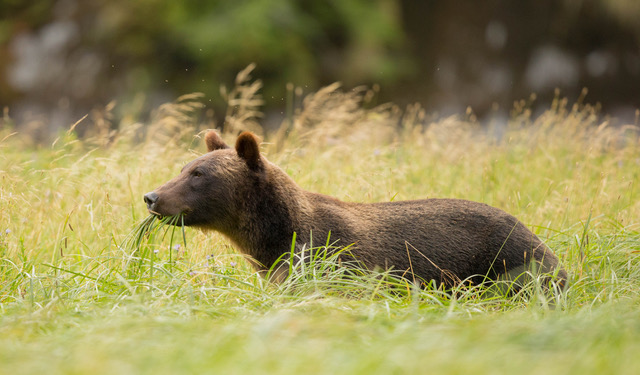
Photo Credit: Trish Boyum Nature Photography
This article is about grizzly bears, and all those findings apply to them. For instance, variations among individual bears are essential in influencing human-bear interactions, the effectiveness of relocation efforts, and the success of constructed wildlife corridors. The presence of specific individuals within a population can thus significantly impact group dynamics or ecosystem functions.
The predominant wildlife conservation model neglects these facts. In British Columbia, the crude population size drives the conservation ranking of individual Grizzly Bear Population Units (GBPUs) from no conservation concern to high concern. Population trends, a degree of isolation, and human-caused disturbances additionally modify this ranking to arrive at the final conservation management concerns.
This complex analysis remains yet indifferent to the fate of an individual grizzly bear. If the population is deemed to be viable and the ecosystem functions sustainably, individual grizzlies in a given GBPU are not a focus of wildlife conservation. In such cases, the “allowable intake” or “sustainable harvest” might take place. And when it does, violence is unleashed on the forests. Bodies of sentient beings get pierced with bullets, while their agony and death are defined with heartless euphemisms.
The grizzly hunt illustrates this cruelty. Although the hunt has been mythologized as a mystical communion with nature or rationalized as a beneficial predator control measure, it is none of those things. Instead, it is an obscene and opportunistic endeavour that leaves only carnage in its path. Hunters kill whichever grizzly comes their way. The easier, the better. This is how it was when the trophy hunt was legal, and this is how it will be if it ever gets reinstated. Bears venturing close to the road or away from the less accessible forest will suffer the most. Their curious, adventurous nature will bring about their doom. It doesn’t matter, though. A bear is just one bear. If the overall population number checks out, it’s all fair game.
This may not, however, be the case. A bear is not just one bear. Going back to the significance of individual personalities underscores the fallacy of conceiving wildlife conservation solely in terms of population size. For instance, boldness and adventurousness. Bold and adventurous bears are crucial to the thriving of a population because they facilitate the movement of animals between and within populations. In our increasingly humanized landscape, animals that can move across longer distances help maintain gene flow between more isolated populations, assist in accessing diverse habitats, and ensure achieving higher reproductive success.
But, precisely because of who they are, adventurous bears are also an easy hunting target. Ironically, evolutionary fitness begets death. Of course, it doesn’t matter to those who only see individual sentient beings as numbers, adding up to a predetermined total. The lack of compassion and the lack of ecological understanding can come together.
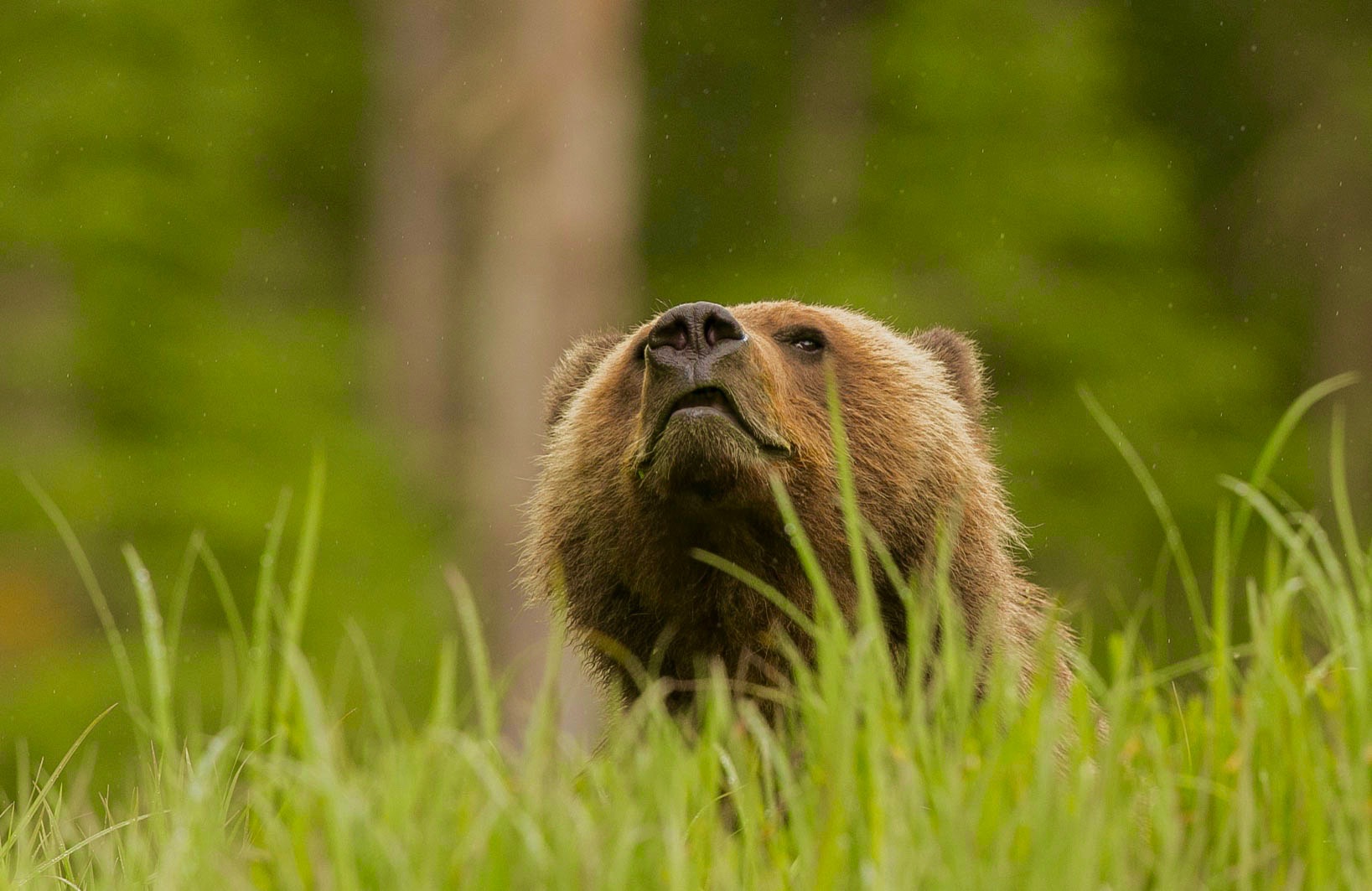
Photo Credit: Trish Boyum Nature Photography
We can’t afford such callousness and ignorance in our increasingly unpredictable times. Climatic changes reshape natural environments, create novel habitats, and affect food options or the timing of food availability. This is why personality traits such as boldness or adventurousness, which influence dispersal patterns, can also prove crucial in successfully adapting to climate change. The adaptive strategies of individual bears can determine whether a population thrives or faces the risk of extinction. It couldn’t be otherwise. After all, it is not a population that adapts but individual animals within a population.
And yet, these adaptations, manifesting in individuals, are not individual creations. Instead, like in humans, early familial influences shape the trajectory of adult life. Bears, too, have cultures defined as behavioural traditions. They influence selecting food sources, acquiring foraging techniques, choosing habitat preferences and seasonal movement patterns, and responding to disturbances and threats.
Such knowledge, individually transmitted, benefits a population. Bears with different dietary preferences or foraging strategies are better equipped to find and exploit alternative food resources. Again, this is not innate knowledge. As Hertel et al.’s research demonstrates, foraging behaviour among grizzly bears is strongly tied to maternal learning. A strong correlation between female bears’ trophic position (feeding habits and dietary preferences) and their cubs proves that. Indeed, young bears tend to exhibit dietary preferences similar to their mothers in the early years of independent living. And females, especially, maintain the nutritional habits of their birth area well into reaching their sexual and physical maturity.
These learned skills ensure survival. For instance, during spring and early summer, salt marshes with intertidal habitats provide coastal grizzly bears with high-quality foraging prior to salmon and berry availability. Herbaceous vegetation, such as sedges, grasses, and forbs, offers a relatively abundant, highly digestible protein source to help replace body mass lost during hibernation. At the same time, feeding on a variety of mussels, barnacles, or clams exposed during low tides provides an additional vital nutritional resource.
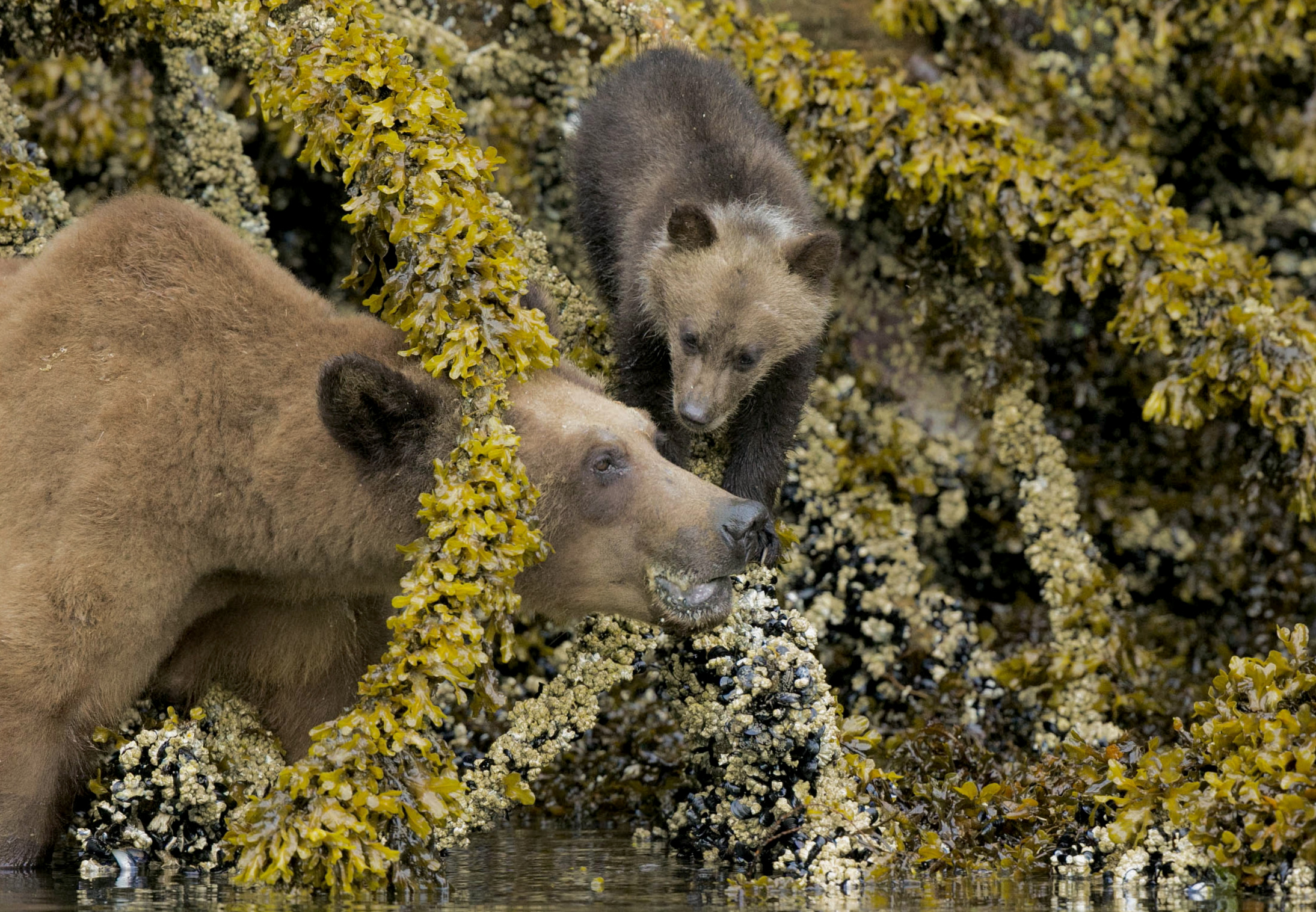
Photo Credit: Trish Boyum Nature Photography
An ability to efficiently exploit these additional food sources of intertidal zones becomes essential for bears emerging from the dens. It is the final result, an acquired skill that started with a mother. Before mastering it, grizzly cubs who haven’t yet developed a taste for seafood watch their mom as she scrapes off the barnacles from the rocks, scoops mouthfuls of them, and then crushes the small shells to extract the live barnacles inside. This is when secrets and mysteries of enjoying coastal delicacies are passed to offspring.
The importance of maternal learning extends, however, beyond imparting food choices and foraging techniques. Mothers also guide cubs in navigating their environment. As Barrie K. Gilbert writes, cubs observe their mother’s responses to stressful situations, identify the cause of her response, and mirror her behaviour. This intergenerational transmission of fear fosters adaptive responses to disturbances and dangers.
Finally, the very exposure to the maternal guidance enhances cubs’ developmental processes. For instance, it renders them mentally prepared to adjust their foraging behaviour to cope with variations in resource distribution or shifts in food availability. Since they were exposed to learning once during a critical developmental stage, they can learn again. Learning facilitates relearning. Cognitive skills engaged in infancy privilege future mental flexibility, prosocial behaviours, and acquisitiveness.
The latest neuroscience substantiates that. In her book Carnivore Minds, Gay A. Bradshaw applies John Bowlby’s attachment theory to show that the early attachment between cubs and their mother fosters mental and emotional growth. It underpins social interactions and future relationships, affecting patterns of thinking, feeling, and behaving. Transmitted in the uniquely receptive biological state, motherly teaching becomes ingrained in the cubs’ cognitive and emotional systems.
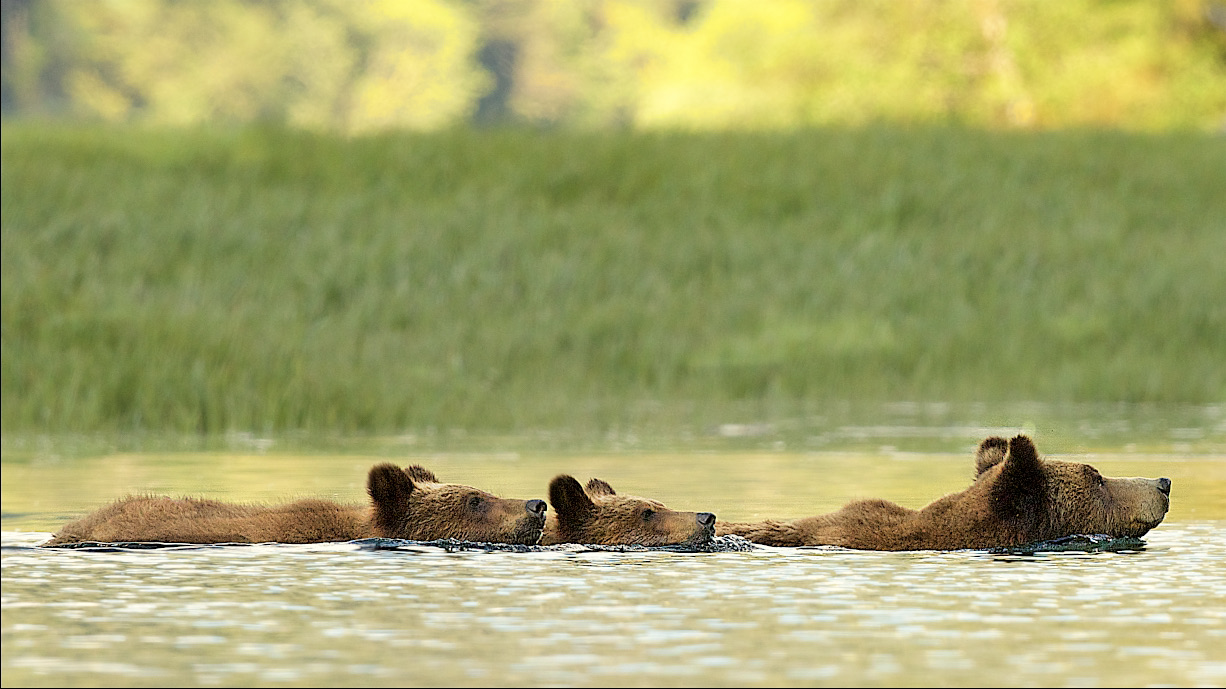
Photo Credit: Trish Boyum Nature Photography
Why does it all matter in discussing the importance of the individual? It does because maternal learning becomes critical in a fast-changing environment and spreads faster than genetic evolution alone. Its absence harms cubs, and it harms a population. When a hunter kills a mother grizzly, maladapted bears venture into the habitat. Although it wasn’t supposed to happen when the grizzly trophy hunt was legal, it did happen, especially when a mother was spotted and shot dead away from her cubs.
Moreover, not only can intergenerational learning be prevented by killing a mother, it can also be lethally erased after this learning occured. Shooting a bear that benefited from motherly guidance constitutes an instant and cruel negation of all the effort that has taken place. Again, it weakens a population. Bears well-adapted to their local environment would utilize it in ways that benefit a biotic community. Each animal plays a role as they complement one another in navigating challenging ecological complexities. Killing shatters this intricate, complementary system. In the age of uncertainty, it can bring a population closer to a tipping point and potentially irreversible decline.
Does wildlife management pay attention to the role of an individual in this context? No, it doesn’t. Determining whether a habitat can sustain a specific population of bears is always challenging but becomes impossible without accounting for individual differences. And yet, neither wildlife managers nor trophy hunters consider the diversity of adaptations in sanctioning “sustainable harvest” or “allowable intake.” Only the arbitrary population size matters. When this size is deemed sufficient or, worse, excessive, a population’s success warrants punishment.
A bear is not just a bear. The killing of a single grizzly terminates a unique life story but can also harm the greater whole this bear was a part of.
The fact that a highly diverse and specialized population can thrive even if it contains a relatively high number of bears becomes irrelevant when a supposed “surplus” of bears rationalizes slaughter. In such a case, killing bears is not only ignorant but egregious. The harm is inflicted, even though the knowledge is lacking. The precautionary principle gets conveniently discarded to condemn living creatures to become gaudy trophies or casualties of the scientifically specious predator control strategy.
A bear is not just a bear. The killing of a single grizzly terminates a unique life story but also harms the greater whole this bear was a part of. Whether it is an adventure-seeking grizzly enhancing the functional connectivity of populations in a fragmented landscape, a bear whose food preferences ideally match a habitat, or a mother bear teaching her cubs to face the uncertain world, an individual animal matters.

Photo Credit: Trish Boyum Nature Photography
We must stand against the grizzly hunt on both a provincial and a local level…Cruelty has no place in society.
Premeditated killing is always wrong; it needs to stop. Whether it is done for a trivial trophy or in the name of misguided predator control measures, the cruelty of the act is compounded by a blatant contempt for the mystery of life. No one gets a reprieve; the anguish in the forest diminishes us, humans. For majestic grizzlies roaming vast areas of British Columbia, firing a rifle in the forest poses an existential threat. For us, it is a scar on the collective conscience.
We must stand against the grizzly hunt on both a provincial and a local level. Disguising it as a predator control measure or hunters’ spiritual communion with nature is an insult to our compassionate beliefs. Cruelty has no place in society.
If anything, a complete ban on grizzly hunting needs to be written into law.
And yet, the fact that it has no place does not mean it might not become a reality. Only our active opposition can stop the slaughter. It’s up to us. In areas of life that fall under the government’s portfolio, appalling things happen not only because elected leaders make them happen but also because they avoid their responsibility to prevent them from happening. The return of the grizzly hunt under any circumstances cannot be one of them. If anything, a complete ban on grizzly hunting needs to be written into law to protect these magnificent creatures from uncertainty and political expediency.
In the social contract, some treasures and values deserve uniform protection. They reflect who we are; they point to our better angels. One of BC Parks’ license plates features a rare grizzly bear framed by the words “Beautiful British Columbia.” Indeed, the province is a wonder of nature, and we must match it with compassion in our hearts.
Literature Cited
Bartoń, K. A., Zwijacz-Kozica, T., Zięba, F., Sergiel, A., & Selva, N. (2019). Bears without borders: Long-distance movement in human-dominated landscapes. Global Ecology and Conservation, 17, e00541. https://doi.org/10.1016/j.gecco.2019.e00541
Bereczky, L. (2017). Individual distinctiveness in juvenile brown bears: Have personality constructs predictive power across time and situations? (Doctoral Thesis). GlobeEdit.
Bradshaw, G. A. (2017). Carnivore Minds: Who These Fearsome Animals Really Are. Yale University Press.
Deacy, W. W., Armstrong, J. B., Leacock, W. B., Robbins, C. T., Gustine, D. D., Ward, E. J., Erlenbach, J. A., & Stanford, J. A. (2017). Phenological synchronization disrupts trophic interactions between kodiak brown bears and salmon. Proceedings of the National Academy of Sciences — PNAS, 114(39), 10432–10437. https://doi.org/10.1073/pnas.1705248114
Ferraro, K. M., Ferraro, A. L., Arietta, A. Z. A., & Sommer, N. R. (2023). Revisiting two dogmas of conservation science. Conservation Biology, 37(4), e14101-n/a. https://doi.org/10.1111/cobi.14101
Gilbert, B. K. (2019). One of Us: A Biologist’s Walk Among Bears (Hardcover). FriesenPress.
Gunther, K. A., Shoemaker, R. R., Frey, K. L., Haroldson, M. A., Cain, S. L., van Manen, F. T., & Fortin, J. K. (2015). Grizzly Bears: Ultimate Omnivores of the Greater Yellowstone Ecosystem. Yellowstone Science, 23(2), 7–11.
Hertel, A. G., Albrecht, J., Selva, N., Sergiel, A., Hobson, K. A., Janz, D. M., Mulch, A., Kindberg, J., Hansen, J. E., Frank, S. C., Zedrosser, A., & Mueller, T. (2023). The ontogeny of individual specialization. bioRxiv, 2023.04.17.537142. https://doi.org/10.1101/2023.04.17.537142
Hertel, A. G., Leclerc, M., Warren, D., Pelletier, F., Zedrosser, A., & Mueller, T. (2019). Don’t poke the bear: Using tracking data to quantify behavioural syndromes in elusive wildlife. Animal Behaviour, 147, 91–104. https://doi.org/10.1016/j.anbehav.2018.11.008
Jimbo, M., Ishinazaka, T., Shirane, Y., Umemura, Y., Yamanaka, M., Uno, H., Sashika, M., Tsubota, T., & Shimozuru, M. (2022). Diet Selection and Asocial Learning: Natal Habitat Influence on Lifelong Foraging Strategies in Solitary Large Mammals. Ecosphere, 13(7), e4105. https://doi.org/10.1002/ecs2.4105
Kant, I. (2017). Groundwork of the Metaphysic of Morals (T. Kingsmill Abbott, Trans.). Digireads.com Publishing.
Kilham, B. (2014). In the Company of Bears: What Black Bears Have Taught Me about Intelligence and Intuition. Chelsea Green Publishing.
Leopold, A. (2020). A Sand County Almanac: And Sketches Here and There. Oxford University Press.
Merrick, M. J., & Koprowski, J. L. (2017). Should we consider individual behavior differences in applied wildlife conservation studies? Biological Conservation, 209, 34–44. https://doi.org/10.1016/j.biocon.2017.01.021
Morgan, D. M., Proctor, G. M., Mowat, B., McLellan, T., Hamilton, T., & Turney, L. (2019). Conservation Ranking of Grizzly Bear Population Units — 2019 (№37 pp.). Ministry of Environment and Climate Change Strategy, Victoria, BC.
Proctor, M. F., Lamb, C. T., Boulanger, J., MacHutchon, A. G., Kasworm, W. F., Paetkau, D., Lausen, C. L., Palm, E. C., Boyce, M. S., & Servheen, C. (2023). Berries and bullets: Influence of food and mortality risk on grizzly bears in British Columbia. Wildlife Monographs, 213(1). https://doi.org/10.1002/wmon.1078
Servheen, C., & Gunther, K. A. (2022). Conservation and management of the culture of bears. Ecology and Evolution, 12(4), e8840-n/a. https://doi.org/10.1002/ece3.8840
Smith, T. S., & Partridge, S. T. (2004). Dynamics of intertidal foraging by coastal brown bears in southwestern Alaska. The Journal of Wildlife Management, 68(2), 233–240. https://doi.org/10.2193/0022-541X(2004)068[0233:DOIFBC]2.0.CO;2
Soule, M. E. (1985). What is conservation biology? Bioscience, 35(11), 727–734. https://doi.org/10.2307/1310054
Wilson, E. O. (2016). Half-earth: Our planet’s fight for life (First ed.). Liveright Publishing Corporation, a division of W.W. Norton & Company.
